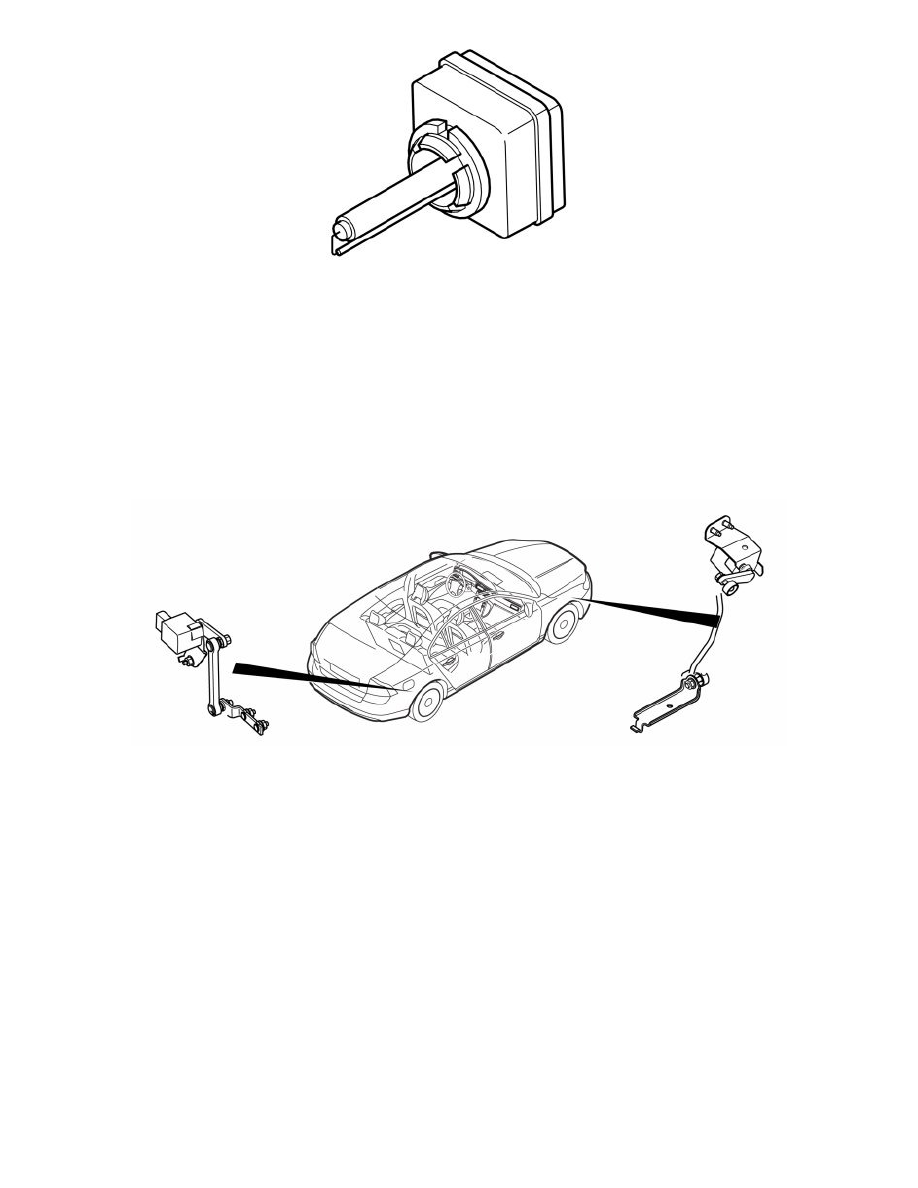XC70 AWD L6-3.2L VIN 98 B6324S (2009)

The light source consists of a discharge tube surrounded by a glass that filters out harmful UV radiation.
-
The discharge tube is filled with a blend of chemical compounds, including the inert gas Xenon.
-
An electric arch is created through an electrical discharge between two tungsten electrodes.
-
Because the lamp does not have a filament, it is less sensitive to bumps and vibrations.
-
Bulb designation: D1S.
-
Power consumption: 35 W.
Caution! The Bi-Xenon bulb contains mercury (less than 0.5 mg), thus classifying it as hazardous waste. Hazardous waste must be handled in
accordance with national legislation. See also Volvo Car Corporation's "Waste Management Guidelines for Dealers."
Position sensor, headlamp levelling
Vehicles without Four-C (Continuously Controlled Chassis Concept) have two position sensors for automatic headlamp adjustment. The headlamps are
adjusted vertically based on load and road conditions to reduce the risk of dazzling.
One position sensor is located next to the rear axle and is connected to the left-hand rear control arm by a linkage system. The other position sensor is
next to the right-hand front axle and is connected to the right-hand front control arm by a linkage system. This linkage system affects the sensor, allowing
the angle of the car to be gauged.
The position sensors are directly connected to the headlamp control module (HCM). Each position sensor has three connections. Two are used for power
supply and ground. One is used for signals on vehicle angle. When the ignition switch is in position II, level control is active and the sensors are used to
calculate the average vehicle angle. At about 4 km/h (2.5 mph), dynamic level control is activated, which also makes quick corrections during
acceleration and braking. In addition to vehicle speed in excess of about 4 km/h (2.5 mph), darkness is required.
The position sensor can be calibrated using the diagnostic tool. The calibration is saved in the headlamp control module (HCM) and must be performed
again upon replacement of the control module or position sensor.
Vehicles with Four-C (Continuously Controlled Chassis Concept) use the signal from the suspension module (SUM) instead.
There are diagnostics for the position sensors.
Left headlamp control unit (LHCU)/Right headlamp control unit (RHCU) (vehicles with active headlamps only)
